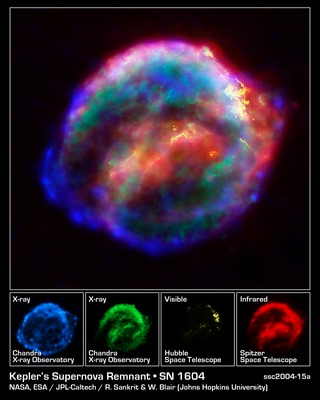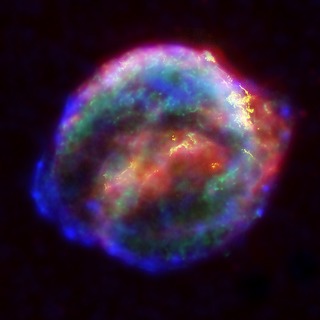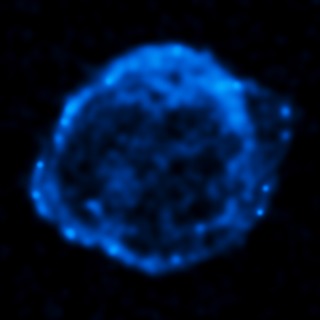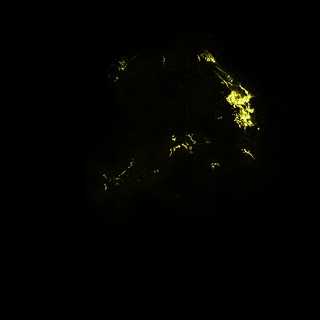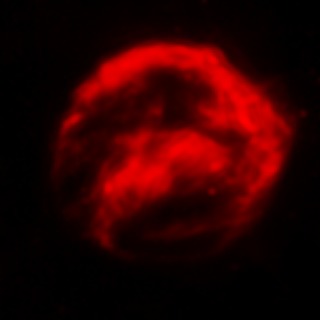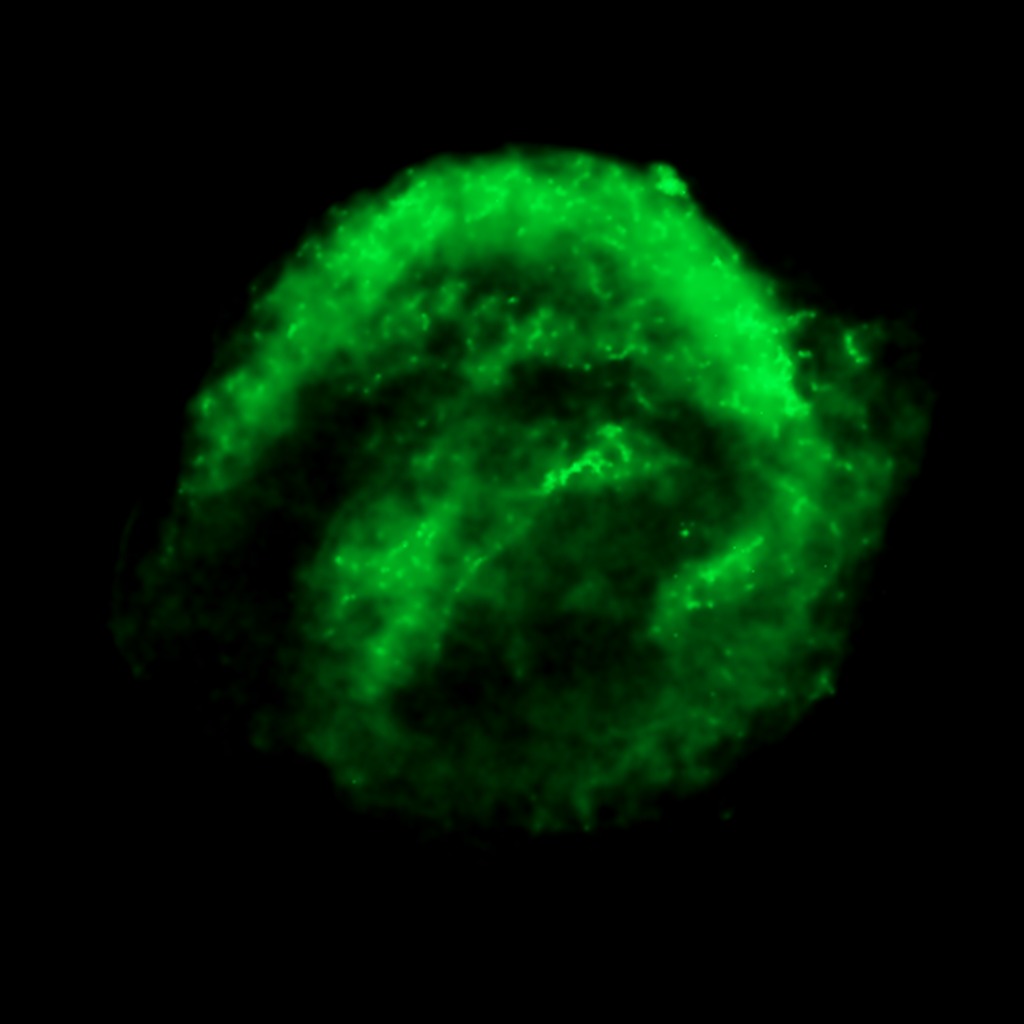
Credit: NASA/ESA/R. Sankrit and W. Blair (Johns Hopkins University)
Observation • October 6th, 2004 • ssc2004-15a3
ssc2004-15a3
This Low Energy X-ray image from the Chandra X-ray Observatory shows the expanding remains of a supernova, called Kepler's supernova remnant, first seen 400 years ago by sky watchers, including famous astronomer Johannes Kepler. The supernova remnant is a fast-moving shell of iron-rich material from an exploded star, surrounded by an expanding shock wave that is sweeping up interstellar gas and dust. The image reveals a bubble-shaped shroud of gas and dust that is 14 light-years wide and is expanding at 4 million miles per hour (2,000 kilometers per second).
The Chandra X-ray data show cooler X-ray gas (lower-energy X-rays) which resides in a thick interior shell and marks the location of heated material expelled from the exploded star.
Kepler's supernova, the last such object seen to explode in our Milky Way galaxy, resides about 13,000 light-years away in the constellation Ophiuchus.
The Chandra observations were taken in June 2000.
About the Object
- Name
- Kepler's Supernova Remnant • SN 1604
- Type
- Nebula > Type > Supernova Remnant
- Star > Evolutionary Stage > Supernova
- Distance
- 13,000 Light Years
Color Mapping
| Band | Wavelength | Telescope |
| X-ray | 0.7 keV | Chandra ACIS |
Astrometrics
- Position (J2000)
- RA =17h 30m 41.5s
- Dec = -21° 29' 31.2"
- Field of View
- 5.0 x 5.0 arcminutes
- Orientation
- North is 360.6° left of vertical
